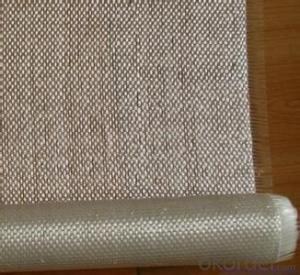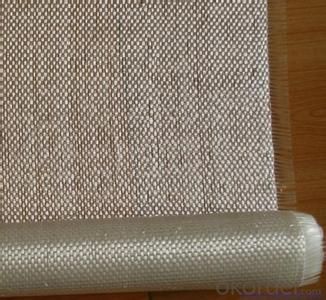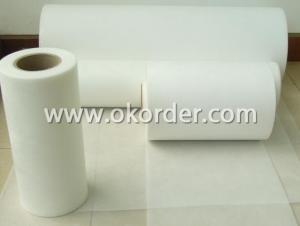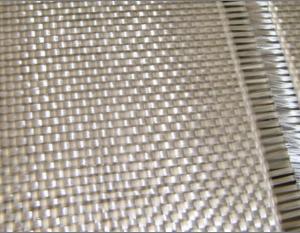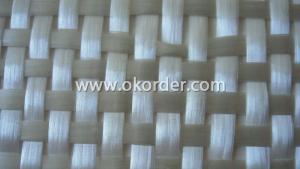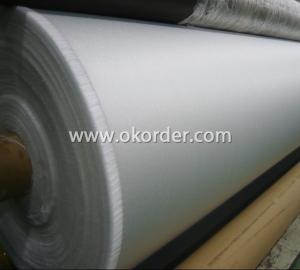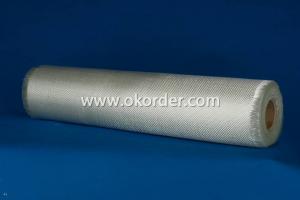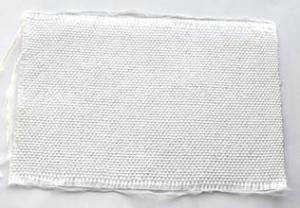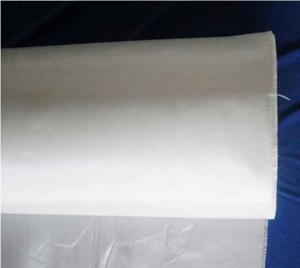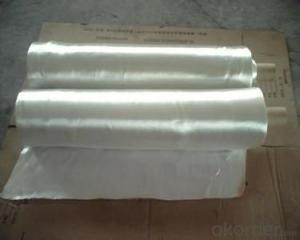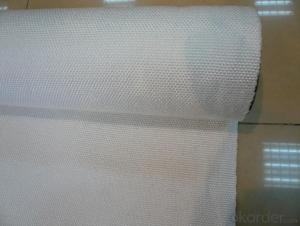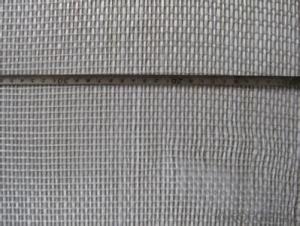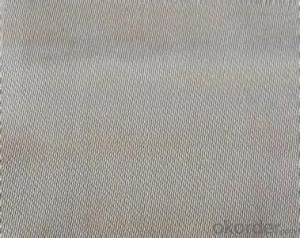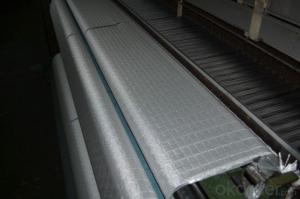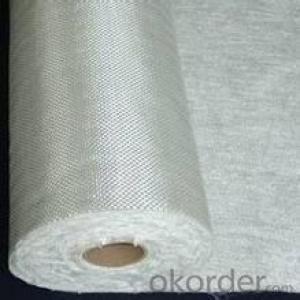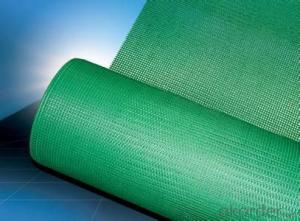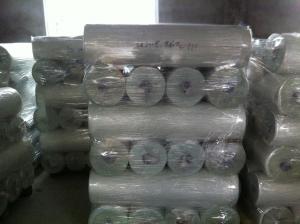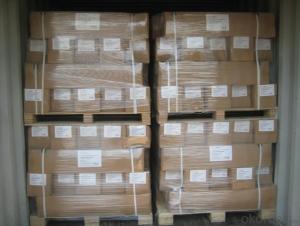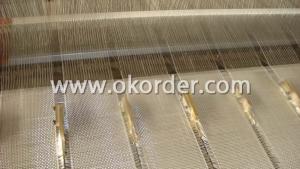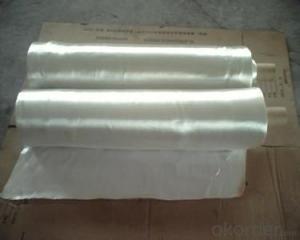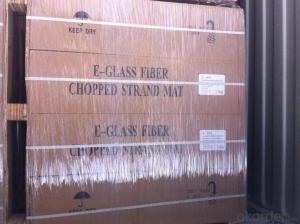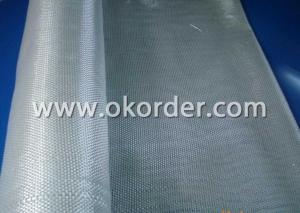High Silica Fiberglass Fabrics with Good Quality
- Loading Port:
- China Main Port
- Payment Terms:
- TT OR LC
- Min Order Qty:
- -
- Supply Capability:
- -
OKorder Service Pledge
Quality Product, Order Online Tracking, Timely Delivery
OKorder Financial Service
Credit Rating, Credit Services, Credit Purchasing
You Might Also Like
Quick Details
| Place of Origin: | Brand Name: | Model Number: | |||
| Shape: |
Packaging & Delivery
| Packaging Detail: | wooden case |
| Delivery Detail: | according to the quantity of order, but not longer than 30 days |
Specifications
Material:fiber glass
Technics:Other
Model Number:0.8-2.0mm
Connection: Other
Shape:roll
- Q: How is fiberglass fabric repaired?
- Fiberglass fabric can be repaired using a few different methods, depending on the extent of the damage. One common method is using epoxy resin and a fiberglass repair kit. First, the damaged area is cleaned and sanded to remove any loose fibers or debris. Then, a piece of fiberglass fabric is cut to size and placed over the damaged area. Epoxy resin is applied to both the fabric and the damaged area, and then the fabric is laid over the damaged area and pressed down to ensure a good bond. Excess resin is removed, and the repair is left to cure according to the instructions on the resin kit. Another method of repairing fiberglass fabric is using a heat gun. This is typically used for minor repairs such as small holes or tears. The heat gun is used to warm up the damaged area, which softens the fiberglass fabric and allows it to be stretched and smoothed out. Once the fabric is smooth and in place, it can be secured using a suitable adhesive or epoxy resin. For larger or more complex repairs, it may be necessary to seek professional help or consult the manufacturer's guidelines. It's important to follow proper repair procedures to ensure a strong and durable repair.
- Q: How is fiberglass fabric used in the production of insulation panels?
- Due to its exceptional thermal insulation properties and durability, fiberglass fabric is widely used in the manufacturing of insulation panels. The fabric, woven from glass fibers, offers a lightweight yet sturdy material that exhibits high resistance to heat, moisture, and chemicals. In the realm of insulation panel production, fiberglass fabric serves as the primary insulation material, typically sandwiched between two facing materials. These facing materials can be composed of aluminum foil, paper, or other fabrics, allowing for a versatile range of options. By acting as the core insulation layer, fiberglass fabric effectively hinders the transfer of heat. Its distinctive composition traps air pockets within its fibers, resulting in a significant reduction of heat conduction. Consequently, this fabric boasts outstanding thermal insulation properties, rendering it a preferred choice for insulation panels. Moreover, fiberglass fabric serves as a reinforcing component in insulation panels, contributing to their strength and stability. This reinforcement prevents panels from sagging or losing their shape over time. Consequently, the insulation panels are able to maintain their insulating properties even when subjected to external pressures or vibrations. In addition, fiberglass fabric is renowned for its fire-resistant qualities. It does not burn or emit toxic gases when exposed to fire, making it a safe and dependable option for insulation panels. This aspect is crucial in ensuring the overall safety of buildings, as it aids in preventing the rapid spread of fire and allows for sufficient time for evacuation. In conclusion, fiberglass fabric plays a vital role in the production of insulation panels, offering excellent thermal insulation, reinforcement, and fire resistance. Its versatility and durability make it an ideal material for various applications, ranging from residential buildings to industrial facilities. By contributing to energy efficiency and comfort, fiberglass fabric greatly enhances the overall performance of insulation panels.
- Q: Is fiberglass fabric suitable for high-stress applications?
- Yes, fiberglass fabric is suitable for high-stress applications. It has excellent strength, durability, and resistance to heat, chemicals, and abrasion, making it a reliable choice for industries such as aerospace, automotive, and construction, where high-stress conditions are common. Its lightweight nature and flexibility further enhance its suitability for such applications.
- Q: What is the typical width of fiberglass fabrics?
- The specific application and manufacturer can cause variations in the typical width of fiberglass fabrics. Nonetheless, fiberglass fabrics typically have standard widths ranging from 36 to 60 inches (91-152 cm). These widths are widely utilized in industries like aerospace, automotive, construction, and marine. It's worth mentioning that custom widths can be manufactured to meet specific requirements when necessary.
- Q: Is fiberglass fabric suitable for outdoor use?
- Yes, fiberglass fabric is suitable for outdoor use. Fiberglass is known for its exceptional durability and resistance to various environmental factors such as sunlight, moisture, and temperature fluctuations. It is also highly resistant to chemicals, making it suitable for outdoor applications where exposure to harsh weather conditions or chemicals is expected. Additionally, fiberglass fabric is lightweight, flexible, and easy to handle, making it an ideal choice for outdoor products such as awnings, canopies, boat covers, and outdoor furniture upholstery. Its heat resistance and fire-retardant properties also make it a safe option for outdoor use. Overall, fiberglass fabric is a reliable and widely used material for outdoor applications due to its strength, durability, and resistance to various outdoor elements.
- Q: Is fiberglass fabric suitable for use in architectural applications?
- Yes, fiberglass fabric is suitable for use in architectural applications. It is lightweight, durable, and resistant to weather conditions, making it a versatile material for a variety of architectural purposes such as insulation, roofing, and cladding. Additionally, fiberglass fabric can be easily molded and shaped, allowing for creative and innovative designs in architectural projects.
- Q: Asphalt + glass fiber cloth
- First spread a layer of asphalt oil, wrapped in glass cloth, oil cloth, and finally coated asphalt oil. Just OK
- Q: How does fiberglass fabric perform in durability?
- Renowned for its outstanding durability, fiberglass fabric is highly regarded. It boasts exceptional strength and resistance to wear and tear due to its composition of woven glass fibers. Its shape remains intact over time as it is not easily deformed or stretched. Moreover, fiberglass fabric displays remarkable resistance to chemical and environmental factors, including moisture, UV radiation, and extreme temperatures. These qualities render it suitable for diverse applications in industries such as automotive, aerospace, marine, and construction. Furthermore, fiberglass fabric's durability is further amplified by its low maintenance needs and long lifespan, making it a cost-effective and dependable option for a multitude of projects.
- Q: Can fiberglass fabric be used for insulation in storage tanks?
- Yes, fiberglass fabric can be used for insulation in storage tanks. Fiberglass fabric is known for its excellent thermal properties, making it an ideal choice for insulation applications. It has a low thermal conductivity, meaning it can effectively reduce heat transfer, keeping the contents of the storage tank at the desired temperature. Additionally, fiberglass fabric is lightweight, flexible, and easy to install, making it a convenient option for insulating storage tanks of various shapes and sizes. It is also resistant to moisture, chemicals, and UV radiation, ensuring its durability and longevity. Overall, fiberglass fabric is a reliable and efficient choice for insulating storage tanks.
- Q: How is fiberglass fabric produced?
- Fiberglass fabric is produced through a process called weaving, where glass fibers are interlaced together to form a strong and flexible fabric. These glass fibers are created by melting glass at high temperatures and then extruding it through tiny holes to form thin strands. These strands are then gathered together and woven into a fabric using specialized machines. After weaving, the fabric is often treated with a resin or coating to enhance its strength and durability.
Send your message to us
High Silica Fiberglass Fabrics with Good Quality
- Loading Port:
- China Main Port
- Payment Terms:
- TT OR LC
- Min Order Qty:
- -
- Supply Capability:
- -
OKorder Service Pledge
Quality Product, Order Online Tracking, Timely Delivery
OKorder Financial Service
Credit Rating, Credit Services, Credit Purchasing
Similar products
Hot products
Hot Searches
Related keywords
